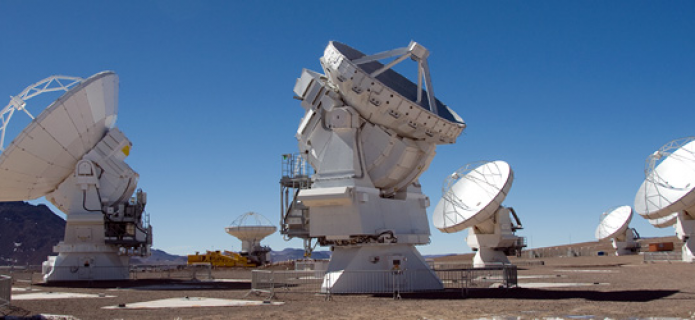First 7-meter ALMA Antenna Arrives at Chajnantor
The first of twelve 7-meter diameter ALMA antennas has just been transported to the 5000-meter-high Chajnantor plateau, where the Atacama Large Millimeter/submillimeter Array (ALMA) is under construction. ALMA is a giant radio telescope composed of an array of fifty 12-meter antennas, as well as a smaller array known as the Atacama Compact Array (ACA). This will have a total of four 12-meter antennas and the twelve 7-meter dishes.
The four 12-meter ACA antennas have already been moved up to the high plateau, but this is the first of the smaller 7-meter dishes -which put the compact into Atacama Compact Array- to reach Chajnantor. It is seen in the centre of this photograph, surrounded by some of the other ALMA antennas. Penitentes ice formations are seen in the foreground.
The larger 12-meter antennas of the main array cannot be placed closer than 15 meters apart as they would otherwise bump into each other. This minimum separation between antennas governs the maximum scale of the features that they can detect in the sky. This means that the main array cannot observe the broadest features of extended objects such as giant clouds of molecular gas in the Milky Way, or nearby galaxies. The ACA is specifically designed to help ALMA make better observations of these extended objects. Its smaller 7-meter antennas can be placed closer together, making them better able to measure the broader structures that the main array misses.
ALMA, an international astronomy facility, is a partnership of Europe, North America and East Asia in cooperation with the Republic of Chile.
All of the ACA antennas are being provided by NAOJ (National Astronomical Observatory of Japan) through a contract with MELCO (Mitsubishi Electric Corporation). ALMA will also have 25 antennas provided by ESO (European Southern Observatory), and 25 by NRAO (National Radio Astronomy Observatory).
